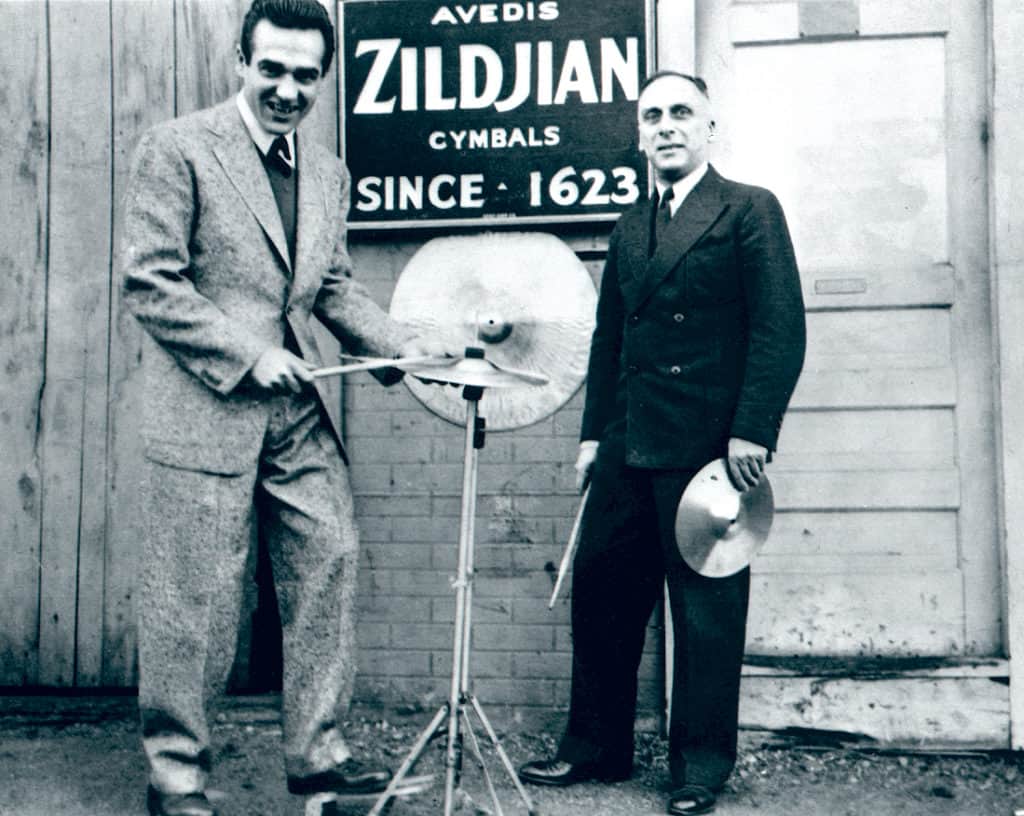If you like seeing live music, or you are a musician yourself, you have probably heard of the Avedis Zildjian Company. Zildjian is the largest cymbal manufacturer in the world. They also manufacture drums and sell drum accessories. The company’s origins are quite interesting. The company was started in Constantinople by Avedis Zildjian in the 17th century, during the reign of the Ottoman Empire. This makes the company one of the oldest in the world.
The cymbals were first created in 1618 by Avedis Zildjian. He was striving to create metal into gold and created an alloy combining tin, copper, and silver into one sheet that he then discovered made musical sounds without shattering. The secret of how to make the metal sheets stayed within the family for hundreds of years. The sound of the metal sheets was so spectacular that the Sultan invited Avedis to live in his palace to make cymbals for the Sultan’s elite Janissary Bands. The Sultan found many uses for the cymbal including daily calls to prayer, religious feasts, royal weddings, and scaring enemies of the Ottoman army. The Sultan endowed Avedis with the name “Zildjian” in Armenian , a word meaning “son of cymbal maker.”
In 1623, Avedis left the palace to start his own business in a suburb of Constantinople called Psamatia. Avedis eventually passed the cymbal-making process onto his first son, Ahkam, who succeeded his father in the company in 1651. Near the end of the 1600s, classical composers began to include cymbals in their compositions; the German opera “Esther” is the first known example, in 1680. In the 1700s, the cymbals gained major popularity in compositions, especially with Mozart.

In 1851 Avedis II built his own boat with the express purpose of displaying and exhibiting his cymbals at the World’s Fair in London. He had much success and the cymbals won awards, and of course, there was a new boon in business. Avedis passed away in 1865 and the business passed to younger brother Kerope, who started exporting approximately 1,300 pairs of cymbals to Europe per year, and continued to grow the business.
in 1868, the family experienced a series of devastating fires. The business accumulated debt, and the family considered leaving the homeland to go to Paris and start over. The Sultan interceded to help the family due to their renowned cymbals, and they stayed put for the time being.
In 1909, Kerope passed away and the business was passed to his younger brother, Aram (the second son of Avedis II). Constantinople experienced political upheaval and Aram fled to Bucharest. He opened a second factory here until he was able to return home. Once back in Constantinople, Aram realized that the company’s biggest customer was now America. Realizing the opportunity, Aram wrote to his nephew, Avedis III, who was already living in America. Avedis III then decided to open a cymbal factory in America. In 1929, Aram traveled to Quincy, Massachusetts to help his nephew set up the first cymbal factory in America.

